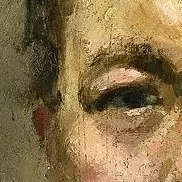

because the very first thing you say in this post basically amounts to “I think I have the authority to decide the basis on which we determine who deserves to vote”
like, yeah, most people can navigate to their secretary of state websites. And it’s not really your responsibility to have to link the pages anyway.
But doing it for that reason aligns you philosophically with people who think that the illiterate, the elderly, the poor, the disabled, the critically ill, etc. somehow don’t deserve to vote. It aligns you ideologically with other people who think they can decide who deserves to vote, with people who want to disenfranchise others-- in essence, it aligns you ideologically with many Republicans








The point this guy is trying to make is that people are conflating Israel, Judaism, and Zionism in ways that don’t always make sense
Like, the polls you’re quoting are sentiments of Israelis, so this guy (and the vast majority of Jewish people in the world) are not included in those polls.
Even within Israel, that’s, what, 3-4 million people that disagree with that sentiment? And Israelis are only ~73% Jewish anyway?
On top of that, tons of zionists arent even Jewish, they are even likely to be antisemitic tbh.
So… what you said sounds a lot like “I don’t have anything against one particular group, but the sentiment of the citizens of this one country makes me second guess the perspective of a person in a totally different country just because they share one dimension of identity”… In essence, it sounds a lot like prejudice
(free palestine, in case that isn’t obvious)